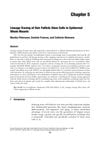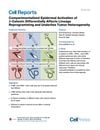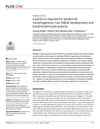Search
forLearn
4 / 4 resultslearn Low Level Laser Therapy
laser therapy for anti-inflammatory and likely insignificant hair regrowth effects
learn Osteopontin
signaling protein that, when suppressed, may grow hair by reducing inflammation and stem cell loss
learn Thymosin Beta 4
Research
5 / 1000+ results
research Lineage Tracing of Hair Follicle Stem Cells in Epidermal Whole Mounts
The method allows for 3D tracking of hair follicle stem cells and shows they can regenerate hair for up to 180 days.
research CUBIC Protocol Visualizes Protein Expression at Single Cell Resolution in Whole Mount Skin Preparations
The CUBIC protocol allows detailed 3D visualization of proteins in mouse skin biopsies.

research Compartmentalized Epidermal Activation of β-Catenin Differentially Affects Lineage Reprogramming and Underlies Tumor Heterogeneity
Activating β-catenin in different skin stem cells causes various types of hair growth and skin tumors.

research Genetically Induced Cell Death in Bulge Stem Cells Reveals Their Redundancy for Hair and Epidermal Regeneration
Hair and skin can regenerate without bulge stem cells due to other compensating cells.

research Alpha-Parvin Is Required for Epidermal Morphogenesis, Hair Follicle Development, and Basal Keratinocyte Polarity
α-parvin is necessary for skin and hair growth and for the correct orientation of skin cells.
Community Join
5 / 81 resultscommunity Sup Chooms?! How y’all living?!
A 35-year-old shared their 5-month hair regrowth progress, using 0.5mg oral finasteride daily, topical minoxidil/finasteride once daily, derma stamping 1-3 times a week, washing hair daily or every other day with peppermint soap, and using eczema lotion for scalp health. Commenters congratulated the individual on the significant improvement in their hairline.
community Clearing the air on how non-surgical treatments really work
Treatments for hair loss, including finasteride, dutasteride, minoxidil, ketoconazole, microneedling, and low level laser light therapy, which aim to reduce DHT production, increase cell absorption and blood flow, and stimulate epidermal stem cells. It also stresses the importance of patience when using these treatments.
community Do you keep gains if you stop microneedling?
Stopping microneedling may result in losing hair gains, as it enhances the effectiveness of treatments like minoxidil. Combining microneedling with minoxidil and finasteride is more effective than using microneedling alone.
community Topical Finasteride Doesn't Directly Reduce 5ar Enzyme on Scalp
Topical Finasteride doesn't directly reduce 5ar enzyme on scalp and has the same mechanism as oral, needing to go through the liver. Users debate the accuracy of this information and discuss various studies and experiences.
community only microneedling and supplements
The user used microneedling, zinc, vitamin D3, biotin, magnesium, saw palmetto, pumpkin seed oil, and a DHT-blocker shampoo with biotin for hair loss. They are considering adding minoxidil due to stagnation in progress.